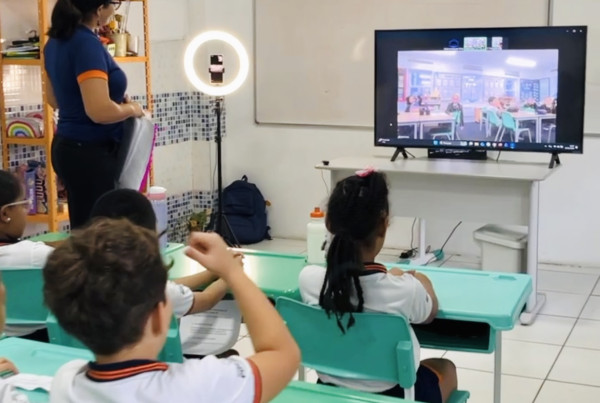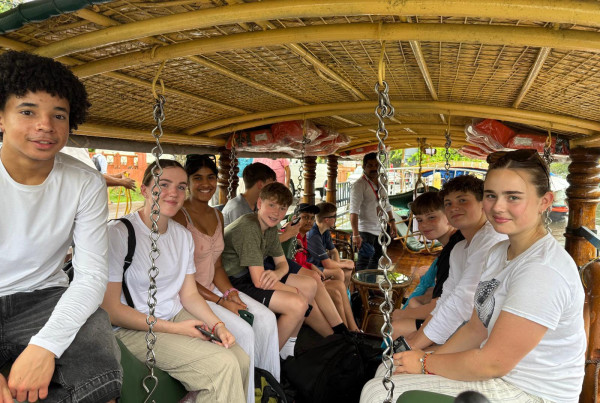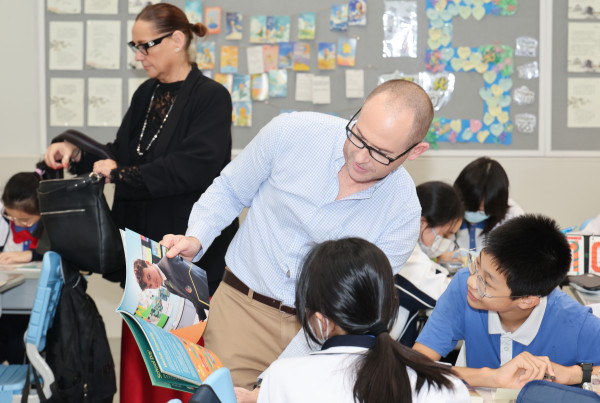
Author
Annelouise Jordan
Deputy Head of King’s Infant School at King’s College, Madrid.
Follow Annelouise on Twitter – @Leazy84
As an educator, developing ethical and global citizens is at the heart of everything I do. Ever since training in Scotland 11 years ago we had to ensure that we were not only creating environments to enable children to become successful learners but that we were developing them as citizens of the world. They are part of it and they are significant. Citizenship as it stands means being a part of a particular country so we are moving onto the term Global Citizenship to mean that we are part of the wider world and that we have a place in it.
It is imperative we ensure this remains key to our school development plans and that it embodies everything we do in school. Developing global citizens means to design ethical curriculums, ensure there is a full representation of the global community in and around your school and that the children are engaged in matters of the world such as the fight against climate change and what they can do to make a difference in the world.
We want children to think globally, learn on a global stage and engage with the world on a personal level. What this doesn’t mean are token PSHE lessons on global citizenship, random assemblies on a Friday afternoon delivered by the Head Teacher to a room full of sleeping lions. It encompasses everything we do. The children need to see the school as not only an extension of themselves but of the world they are a part of.

Step 1: Have it as a key target in your school’s development plans
You need a clear target area for your school’s development plan (SDP) which clearly states the intention of what you will change in the culture of the school. An example could be:
To Develop a global perspective for pupils to gain knowledge and become confident talking about current topics and themes in news and widen learning opportunities on cultural diversity.
Make the target broad and achievable, think about where you are right now and where you need to get to so the broader you make it the more flexibility you will have in being able to achieve it. From this you think about the smaller targets which is what the staff use in their daily thinking and planning to achieve the overall target. This must be shared with staff and they must be on board with the vision. Taking the time to develop it together and create working parties in different areas will ensure its success.
Step 2: Make small, achievable targets that will work towards the main aim
Since the main aim is to develop global citizens, you have to think how you will get there. What do you and your school need to do to achieve this and in a way that is manageable. This all comes back to the starting point, what do you have and what do you need to have? Start really small and think about the books in libraries and classrooms, do the books fully represent the children on a global scale? What about the stories they tell? When I was doing this in my classroom I saw a book about a farmer’s boy and as I looked through the pages all I could see was a white, male and very stereotypical book about farming. The farmer’s wife, as you’ve guessed, was actually called ‘The Farmer’s Wife’ and yes…she was in the kitchen for the whole story. Even the book ‘The Lightkeeper’s Lunch’ infuriated me and caused me to throw out the whole English topic that term since it was based around the book. For a start, my children are in an inner-city school in the middle of Madrid but secondly, their view of the ‘seaside’ is a man going to work each day in a lighthouse and his wife packing his lunch to send over (despite it being a delicious lunch!). So instead of the ‘Seaside’ topic for Year 2 we looked at the ‘Environment’ and still managed to cover the same NC Objectives. Just by looking through books and questioning their globality we made our first step towards developing global citizens. Here are some other achievable targets that could be useful:
Plan events and schemes of work to specifically challenge identified stereotypes in pupil’s curriculum topics.
Design an ethical curriculum with a specific focus on ethnicity, religion and disability to ensure full representation is evident throughout the school.
Eco team created for parents
Eco team for children to discuss issues, present solutions and present information to fellow peers.
School Council for children to meet and discuss issues relating specifically to their school and aspects to improve – pupil voice
Step 3: Staff and leaders MUST have full ownership of it
This is the most vital part of it all, you can have an amazing SDP with steps and actions to take as well as follow up reviews but it will mean nothing if the staff and leaders do not share the vision. This is when you have to take a step back and review. If there are members of the team who do not share then you have to involve them in the ‘why’. You have to get them on board by providing ways to immerse them further and engage them with it. What you should never do is leave them out, ignore them, pull them up in termly reviews, scorn them or reprimand them for not having their displays in line with diverse representation. Everyone needs to work together, maybe it’s because they can’t find the resources or maybe it’s because the whole concept or talking about racism, disability, homophobia or religion scares them because they don’t have the training or background to discuss it openly. By having these conversations, by creating a shared vision and by opening the doors to each and every single classroom you become a community who supports and guides one another. It’s OK not to know how to do something and we tell our children this every day. We should be saying this to our staff too.
The ultimate goal is to ensure the children in our care are individualised as well as globalised and this means to give them a platform to speak for themselves and for those who do not have a voice through repression. If we have global children we will live in a global world where our children can be whoever they want to be and wherever they want to be.
“If you can see it you can be it” – Aretha Banton




